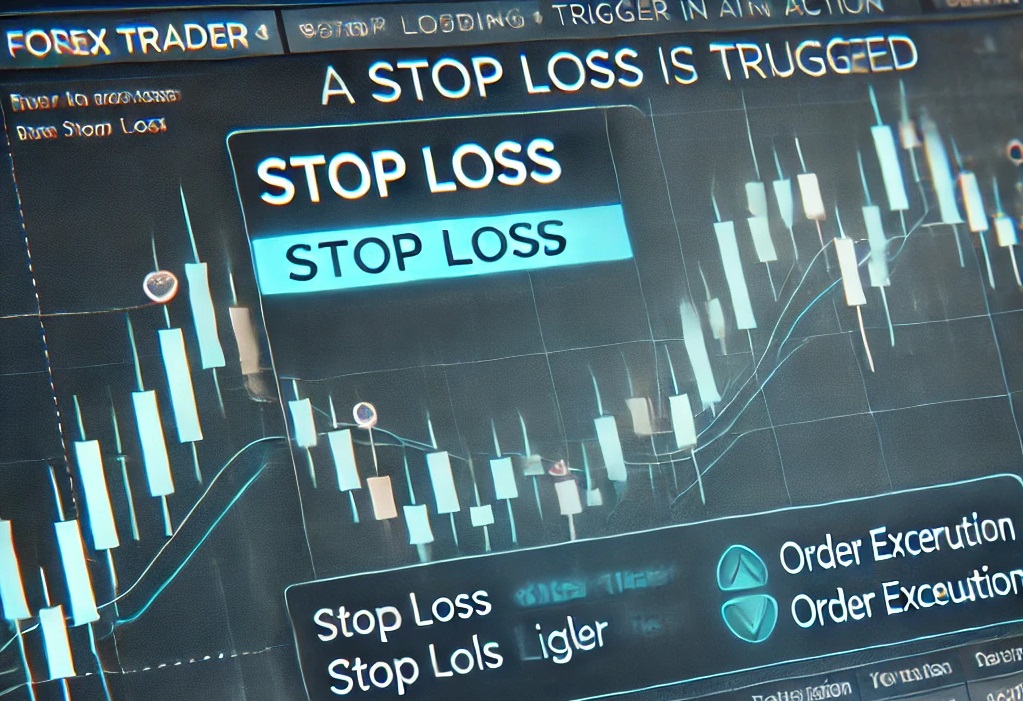
Stop Loss Trigger in Forex Trading
Many Forex traders struggle with losing money. One big reason is that they don’t know when to stop a bad trade. They keep hoping the price will change in their favor. But sometimes, it keeps moving against them. This can lead to big losses. Both beginners and experienced traders face this problem. Without a plan, emotions take control, and traders lose more than they should.
A stop loss trigger is the solution. It automatically closes a trade when the price reaches a certain level. This protects traders from losing too much. However, many don’t know how to set it correctly. If it’s too close, they lose money quickly. If it’s too far, they risk even more. Understanding how to use a stop loss trigger is very important. It helps traders control their losses and trade with confidence. In this blog, we will explain how to use it properly in 7 simple steps.
Understanding the Problem of Stop Loss Trigger
Many Forex traders lose money because they don’t use a stop loss trigger correctly. A stop loss is a price level that automatically closes a trade to limit losses. However, traders often place it in the wrong spot. If it’s too close, small price movements trigger it too early, causing unnecessary losses. If it’s too far, traders lose more than they should before exiting. This problem happens due to market volatility and trader emotions. The Forex market moves quickly, and prices go up and down within seconds. Without a well-placed stop loss, traders either lose too fast or risk too much.
For example, imagine a trader buys EUR/USD at 1.1000, expecting the price to rise. He places a stop loss at 1.0995 (just 5 pips away). A small market fluctuation hits 1.0995, closing his trade early. Then, the price moves up as he expected, but he is already out of the trade. Another trader places a stop loss too far at 1.0950 (50 pips away). The price drops, hitting 1.0950, and he loses a lot before the trade closes. Both traders face losses due to incorrect stop loss placement. Understanding why this happens is the first step to fixing it.
Solutions for Stop Loss Trigger
Now that we understand the problem, let’s look at how to use a stop loss trigger correctly. Whether you’re a beginner or an experienced trader, following these best practices will help you minimize losses and improve your trading strategy.
1. Choose the Right Stop Loss Placement
Placing a stop loss too close leads to early exits, while placing it too far results in large losses. Here’s how to do it correctly:
Use Support & Resistance Levels – Identify key price levels where the market often reverses. Place your stop loss just below support (for buy trades) or above resistance (for sell trades).
Consider Volatility – A volatile market moves quickly, so use a wider stop loss. A stable market allows for a tighter stop loss.
Use the ATR Indicator – The Average True Range (ATR) helps measure market volatility. A good rule is to place your stop loss 1.5 to 2 times the ATR value away from your entry price.
Example:
If ATR is 10 pips, your stop loss should be 15 to 20 pips away from your entry price.
2. Set a Stop Loss Based on Risk Management
A good risk-to-reward ratio is key to long-term success. Never risk more than 1-2% of your trading account on a single trade.
Example:
If your account is $10,000, risking 1% means your stop loss should limit your loss to $100 per trade. Adjust your lot size accordingly.
3. Use a Trailing Stop Loss
A trailing stop moves with the price, locking in profits while reducing risk. If the price moves in your favor, the stop loss follows, securing gains.
Example:
If you buy EUR/USD at 1.1000 and set a 20-pip trailing stop, the stop loss moves up when the price rises. If EUR/USD reaches 1.1050, the stop loss moves to 1.1030, protecting some profit.
Pro Tips for Advanced Traders
✔ Use Stop Loss Strategies Based on Trading Style:
Scalpers: Keep a tight stop loss (5-10 pips).
Swing Traders: Use a wider stop loss (30-100 pips).
Long-Term Traders: Place stop losses based on major market trends.
✔ Avoid Common Mistakes:
Don’t place stop losses at round numbers (e.g., 1.1000) because they attract market manipulation. Don’t move your stop loss further away when the market moves against you—this increases risk. Always test your stop loss strategy on a demo account before using real money.
Frequently Asked Questions for Stop Loss Trigger
Here are some common questions traders ask about stop loss triggers and how to handle them properly.
1. How do I detect this issue in real-time?
You can detect stop loss issues by watching how often your trades hit the stop loss before moving in your favor. If this happens frequently, your stop loss might be too tight.
Solution:
Check market volatility before placing a stop loss.
Use indicators like ATR (Average True Range) to set a better stop loss distance.
Look for support and resistance levels to avoid placing stop losses in predictable areas.
Example:
If your trades keep closing at a 10-pip stop loss but then move in the right direction, you may need to set a wider stop loss.
2. Can brokers legally stop me out on purpose?
Some traders believe brokers “hunt” stop losses. While it’s true that prices can be manipulated in some markets, regulated brokers do not legally manipulate stop losses. However, market movements can sometimes create the illusion of stop hunting.
Solution:
Trade with a regulated broker to avoid unfair practices.
Check the spread before entering a trade—wide spreads can trigger stop losses unfairly.
Use an ECN (Electronic Communication Network) broker for better price execution.
3. What tools can I use to prevent stop loss problems?
Using the right tools can reduce stop loss mistakes and improve your trading strategy.
Useful tools:
ATR Indicator – Helps you set stop losses based on volatility.
Stop Loss Calculator – Helps you calculate the best stop loss based on account size and risk percentage.
Trailing Stop – Automatically moves your stop loss as the price moves in your favor.
Example:
If you are trading in a highly volatile market, the ATR indicator can guide you to place a stop loss further away to avoid unnecessary exits.
4. Is this problem more common in specific market conditions?
Yes, stop loss issues are more common in high-volatility markets and news events. Sudden price spikes can hit stop losses before reversing.
Solution:
Avoid trading during major news events if you are not experienced.
Use a wider stop loss when volatility is high.
Consider trading in more stable market sessions (e.g., London and New York overlap).
5. Should I always use a stop loss?
Yes! Trading without a stop loss is very risky. However, the placement of your stop loss is just as important as using one.
Solution:
Always use a stop loss, but adjust it based on market conditions.
If you prefer not to use a stop loss, consider hedging as an alternative risk management strategy.
Conclusion of Stop Loss Trigger
Using a stop loss trigger correctly is essential for successful Forex trading. Many traders lose money because they place their stop loss too close or too far. By understanding market conditions, using the right tools, and applying proper risk management, you can avoid unnecessary losses.
This issue can be managed and controlled with practice. Don’t let stop loss mistakes discourage you. Keep learning, test your strategies, and adjust based on market conditions. Smart risk management will help you trade with confidence and protect your capital. Stay informed, stay disciplined, and keep improving! 🚀
Have you ever faced issues with stop loss triggers? Share your experiences in the comments! Let us know what worked for you and what didn’t.
Try testing different stop loss strategies with your broker. Check if your stop loss gets triggered too early and adjust accordingly.
For more Forex tips and trading insights, follow our blog or subscribe to our newsletter. Stay ahead of the market and trade smarter! 🚀
Recommended Next Steps
✅ Review Your Stop Loss Strategy – Check if your stop losses are too tight or too far. Adjust based on market conditions.
✅ Use the Right Tools – Apply the ATR indicator, support & resistance levels, and trailing stops to improve your stop loss placement.
✅ Test Different Brokers – Compare execution speeds, spreads, and stop loss accuracy to ensure fair trading conditions.
✅ Practice on a Demo Account – Before using real money, test different stop loss settings in a risk-free environment.
✅ Stay Updated on Market Conditions – Avoid trading during high-volatility news events unless you have a solid strategy.
✅ Follow Our Blog for More Tips – Keep learning and improving your Forex trading skills with expert insights.
For more insights into Forex trading, check out Investopedia and BabyPips.





